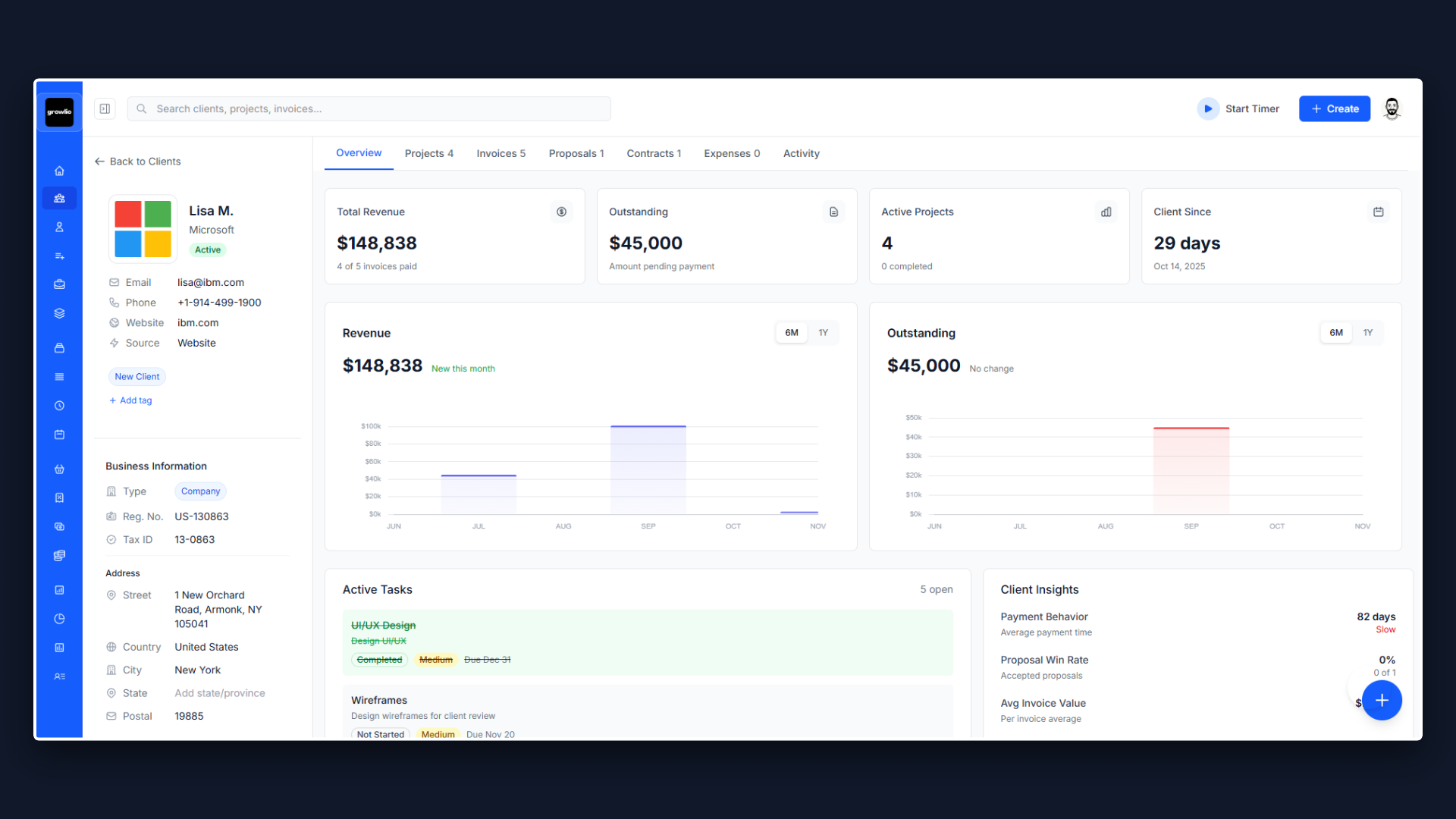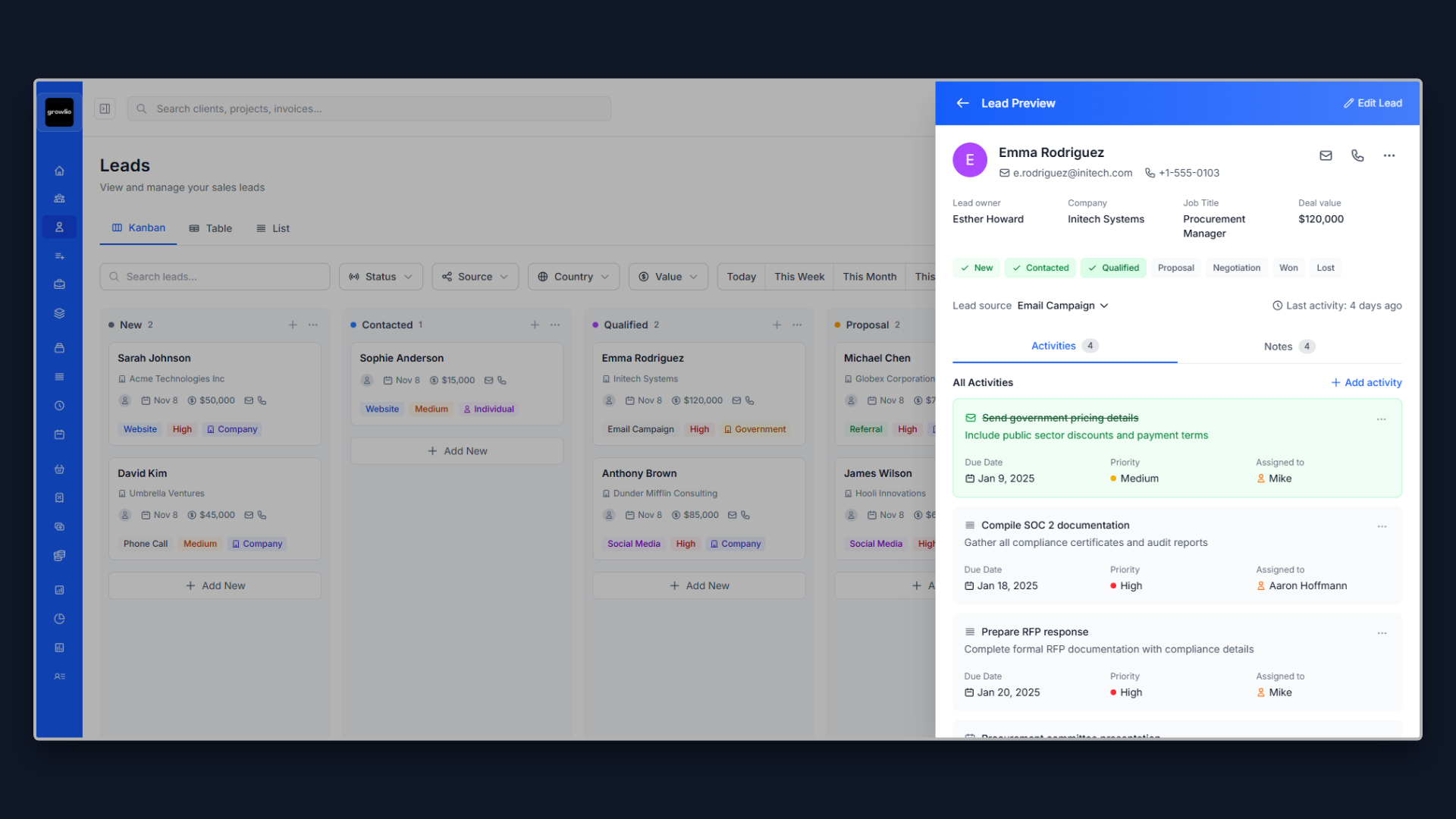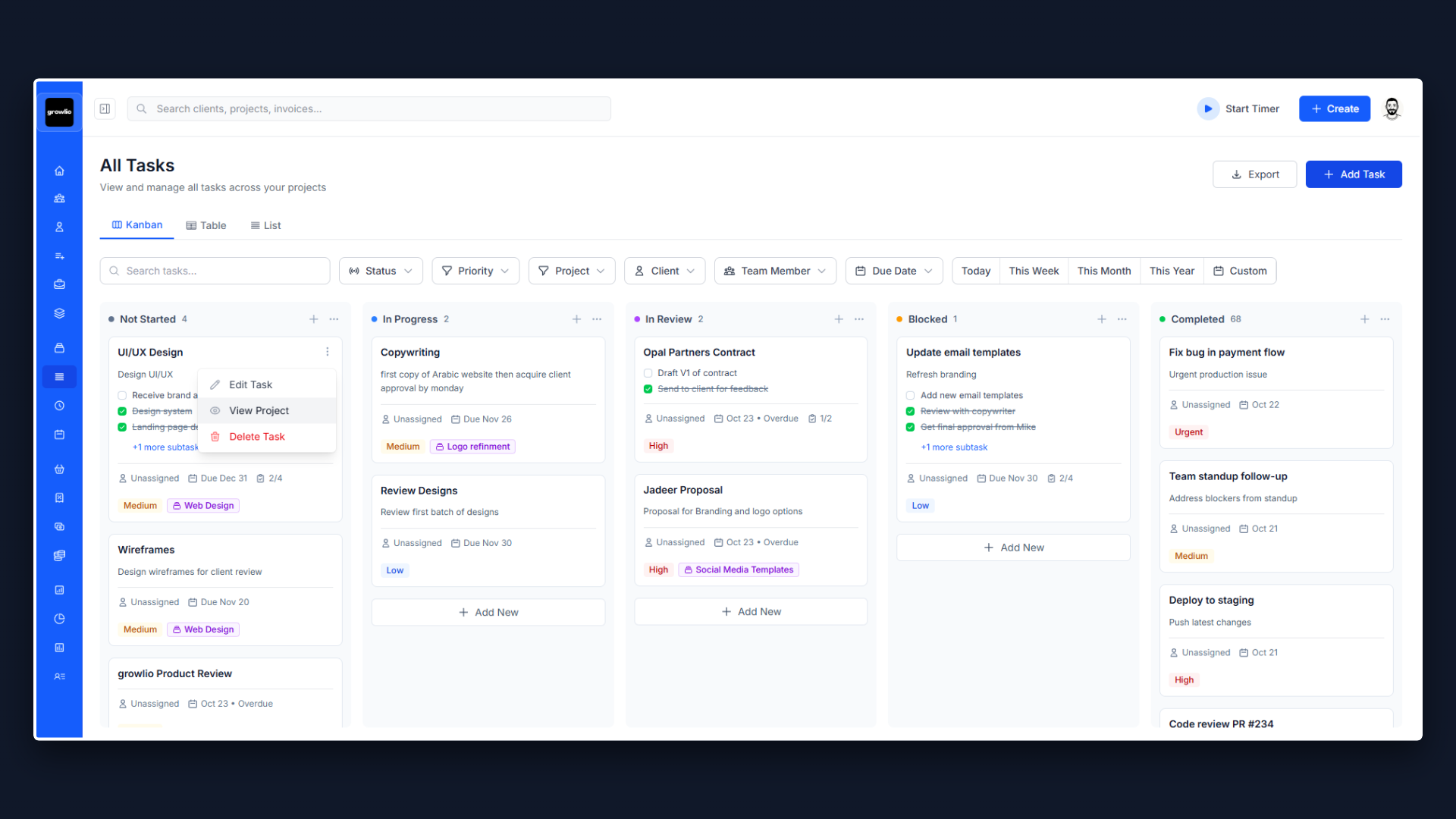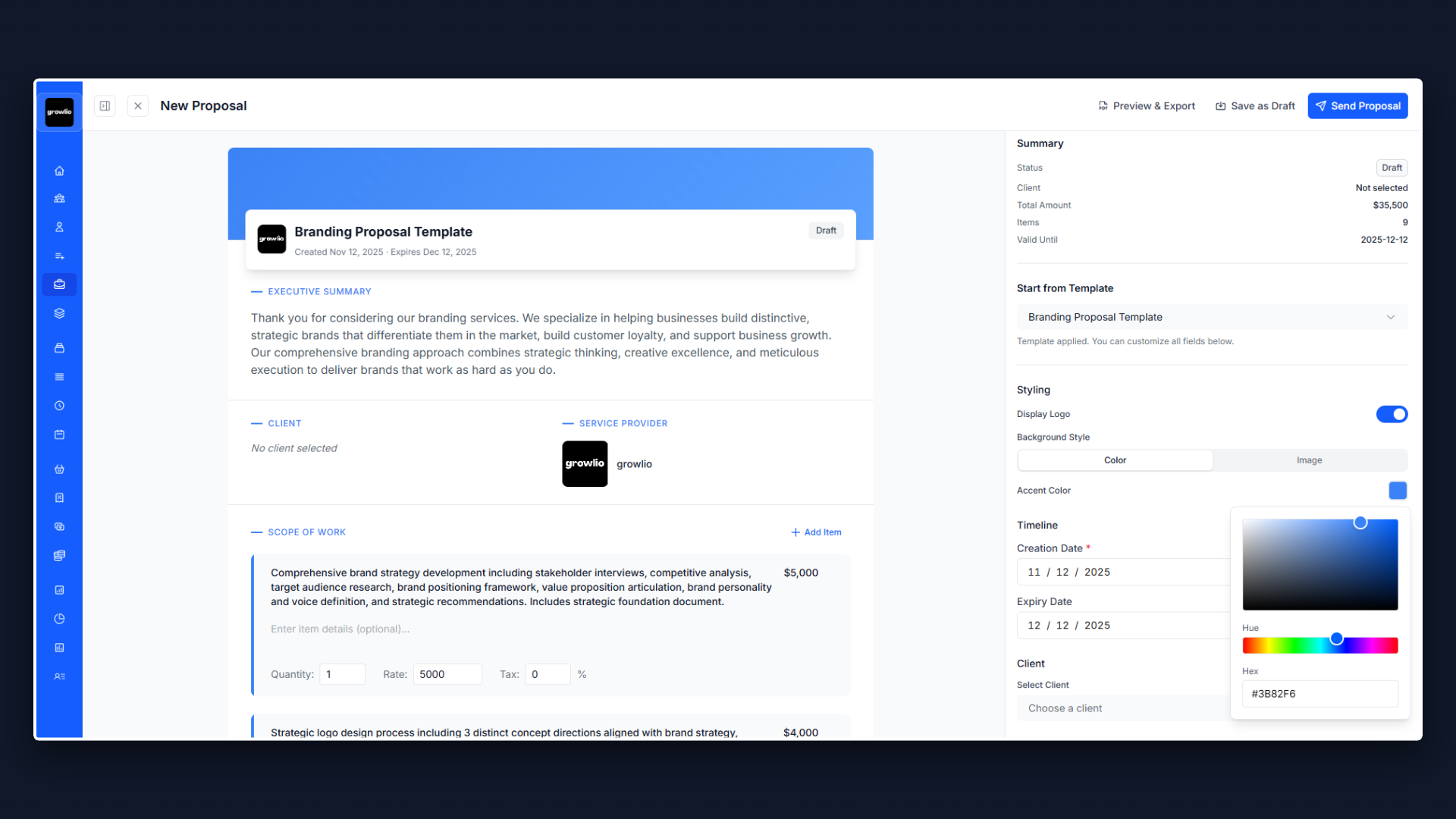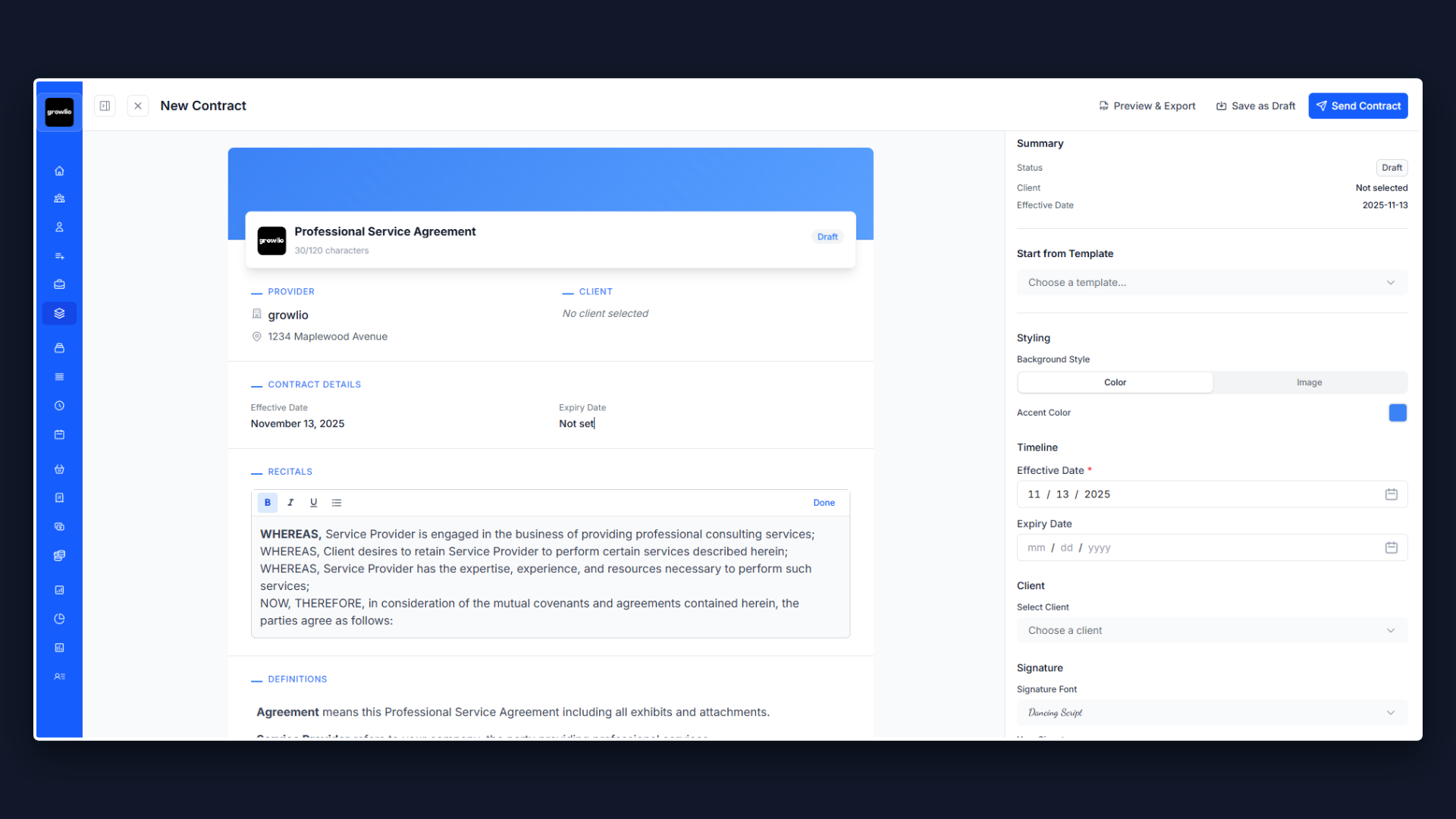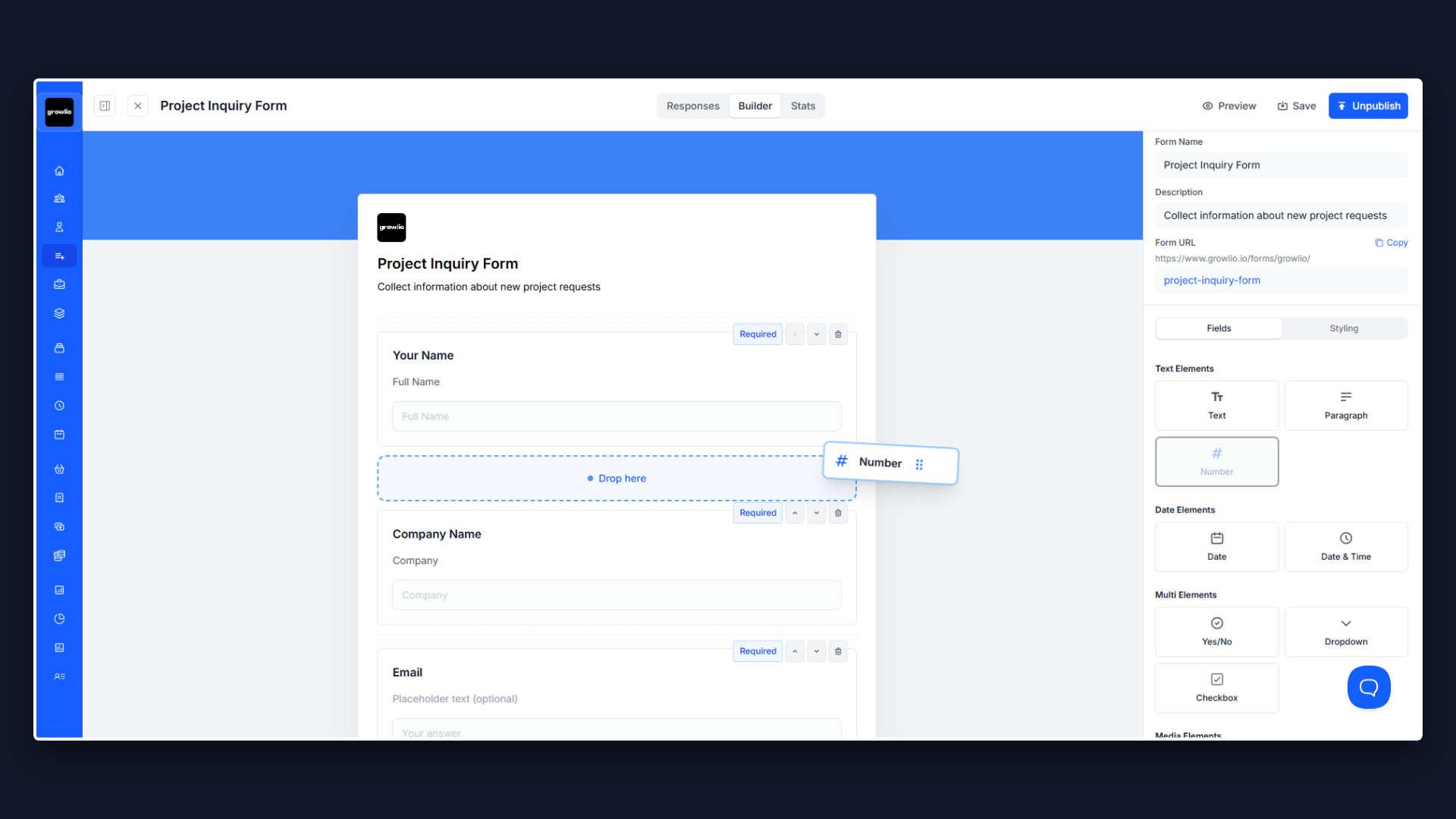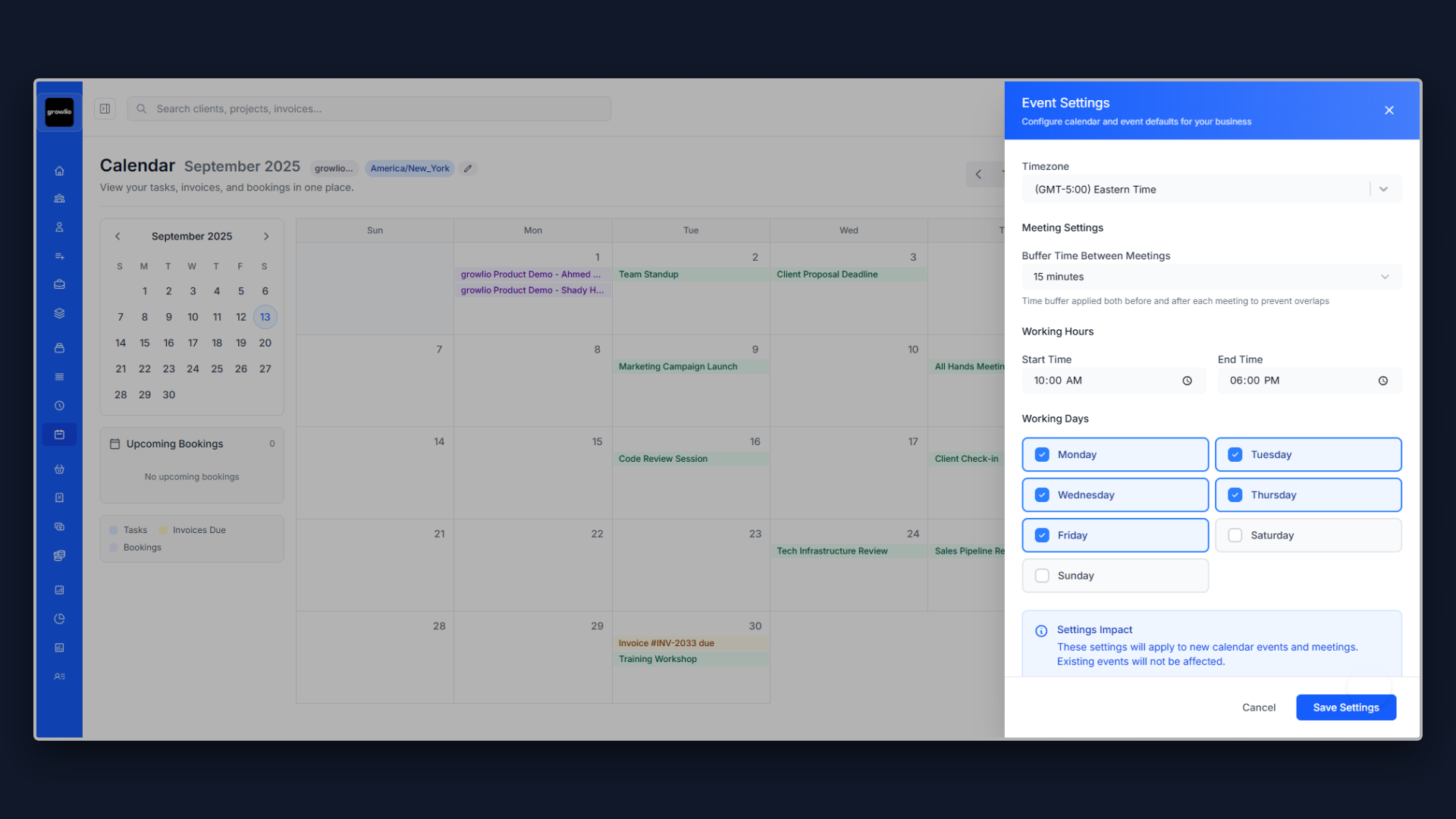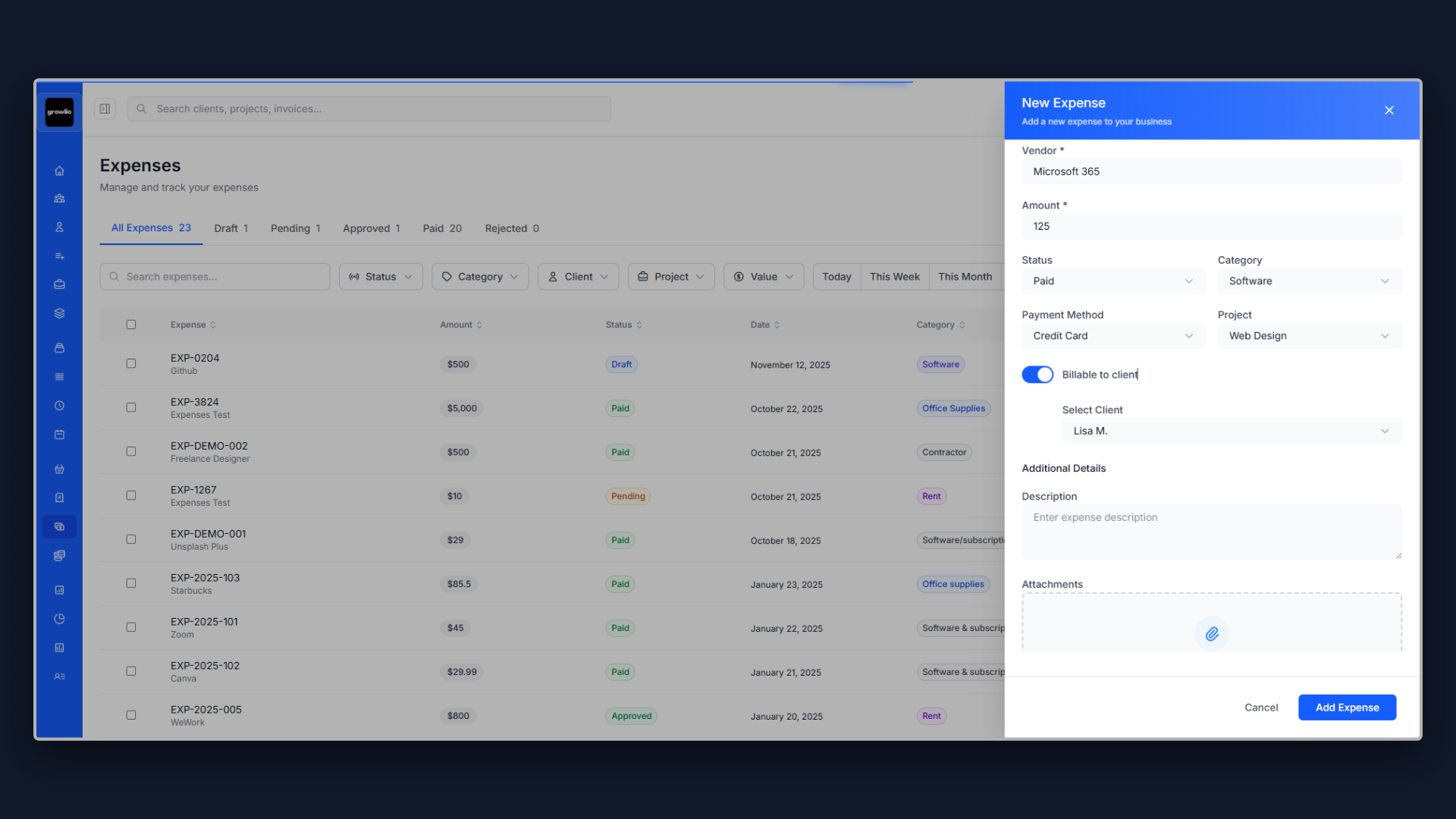Why Your Translation Proposal Determines Whether Clients Trust You With Their Message
In translation services, you're not just converting words between languages—you're preserving meaning, tone, cultural nuance, and brand voice across linguistic and cultural boundaries. Before a company entrusts you with their website, legal documents, marketing materials, or technical manuals, they need confidence you'll deliver accuracy, cultural appropriateness, and professionalism that protects their reputation in new markets.
The translation industry generates over $50 billion globally, with businesses increasingly recognizing that poor translation can damage brand reputation, create legal liability, or cause costly misunderstandings in international markets. Yet many companies have horror stories of translation failures—mistranslated product instructions, culturally offensive marketing campaigns, or legal documents with critical errors. The difference between translators charging $0.08/word and those commanding $0.25+/word often comes down to how they present their expertise, quality assurance, and value in proposals.
Your translation proposal needs to accomplish several critical objectives simultaneously: demonstrate deep expertise in both source and target languages and cultures, prove you have quality assurance processes that ensure accuracy, showcase understanding of the client's industry and specialized terminology, address concerns about turnaround time, cost, and confidentiality, and differentiate your services from machine translation and commodity translation mills. This is your opportunity to transform from a word converter into a trusted language partner who enables successful international business.
1. Open With the Risks of Poor Translation, Not Your Language Credentials
The biggest mistake translators make is leading with credentials: "I'm a certified translator with 10 years of experience..." Your prospect doesn't care about your certifications yet. They care about the risks they face if translation goes wrong.
Start by demonstrating you understand what's at stake with their specific translation needs. For a medical device company seeking regulatory translation, open with: "Your FDA-cleared medical device needs CE marking documentation translated into German, French, and Italian to enter European markets representing $15M+ in potential annual revenue. Translation errors in regulatory submissions can delay approval by 6-12 months, cost $50,000-$200,000 in resubmission fees, or worse—create patient safety risks that trigger product recalls and litigation. The EU Medical Device Regulation requires translations by qualified linguists with medical expertise, not just native speakers. You need translators who understand medical terminology, regulatory requirements, and the consequences of mistranslation in life-critical contexts."
For a software company localizing their product: "You're launching your SaaS platform in Latin America, targeting Spanish-speaking markets with $500M+ potential revenue. Poor translation doesn't just make your product look unprofessional—it drives users to competitors with better localized experiences. Literal translations that ignore regional Spanish variations alienate users. Technical jargon translated incorrectly creates support nightmares. Cultural insensitivity damages brand reputation. You need linguists who understand software UI/UX conventions, Latin American Spanish variants (Mexican vs. Colombian vs. Argentine), and how to make your product feel native, not foreign."
This risk-focused opening immediately shows you understand the business stakes and think beyond just converting words between languages.
2. Demonstrate Language and Industry Expertise Specifically
Generic claims of "native fluency" or "years of experience" don't differentiate you. Show specific expertise relevant to their needs.
Present targeted expertise profile: Language Pair Expertise: English → German (Medical/Regulatory)
Linguistic Qualifications: Native German speaker (born and raised in Munich, currently based in Berlin). C2-level English proficiency (Cambridge Certificate, lived in US for 5 years during graduate studies). Member of BDÜ (German Federal Association of Interpreters and Translators). ATA-certified (American Translators Association) in English to German. Continuing education in medical/regulatory translation (40+ hours annually).
Subject Matter Expertise: 8+ years specializing in medical device and pharmaceutical translation. Bachelor's degree in Biology, Master's in Translation Studies with medical specialization. Deep familiarity with EU MDR (Medical Device Regulation), FDA regulations, ISO 13485, IEC 60601. Translated 200+ regulatory submissions including Instructions for Use, clinical evaluation reports, technical files. Experience with Class I, IIa, IIb, and III devices across cardiology, orthopedics, diagnostics.
Industry Knowledge: Understand Notified Body requirements and common rejection reasons. Familiar with MEDDEV guidance documents and harmonized standards. Know medical terminology in both languages (not just dictionary definitions but practical usage). Aware of regional regulatory differences (Germany vs. France vs. Italy). Understand the importance of consistency across document sets.
What Sets Me Apart: Not just a German speaker—a medical device specialist who translates. I catch technical errors in source documents (saved clients from submitting flawed originals). I provide terminology recommendations improving consistency across your documentation. I flag potential regulatory issues during translation (e.g., claims not supported in source). I deliver translations that pass Notified Body review without revision requests.
This specific expertise presentation proves you're not a generic translator but a specialist who understands their domain deeply.
3. Outline Your Translation Process and Quality Assurance
Clients fear receiving translations full of errors or awkward phrasing. Detail your systematic process that ensures quality.
Present your methodology clearly:
Stage 1: Project Analysis & Preparation (Day 1)
Review all source documents for completeness and clarity. Identify specialized terminology requiring research or client clarification. Create project-specific glossary and style guide (or use client's existing). Set up translation memory (TM) for consistency (especially for updates or series). Clarify any ambiguities in source text before beginning translation. Flag any source errors or potential issues for client review.
Stage 2: Initial Translation (Days 2-5, varies by volume)
Translate source text preserving meaning, tone, and intent. Research specialized terms using reliable sources (medical dictionaries, regulatory databases, industry publications). Maintain consistency with previous translations (via TM) and client terminology. Apply target language conventions and cultural appropriateness. Leave comments on difficult passages or alternative translation options. Use CAT tools for efficiency and consistency tracking.
Stage 3: Self-Review & Editing (Day 6)
Review translation with fresh eyes after time away from text. Check for accuracy against source (no omissions, additions, or errors). Ensure naturalness and fluency in target language. Verify terminology consistency throughout document. Confirm formatting and layout match source document. Quality check numbers, dates, units, proper nouns.
Stage 4: Independent Proofreading (Day 7)
Second linguist reviews translation (four-eyes principle for critical documents). Proofreader checks accuracy, consistency, and fluency. Focuses on catching errors translator may have missed due to familiarity. Verifies compliance with industry/regulatory standards. Provides feedback and suggested improvements.
Stage 5: Final Quality Assurance (Day 8)
Incorporate proofreader feedback and resolve any disagreements. Final check using QA software to catch formatting issues, typos, inconsistencies. Verify all client-specific requirements met (style guide, formatting, naming conventions). Package deliverable with translation certificate if required. Provide quality report documenting process and any issues encountered.
Stage 6: Delivery & Support (Day 8+)
Deliver translation in requested format with all supporting files. Provide translation memory and terminology database for future projects. Answer any questions about translation choices or terminology. Offer revision support if client identifies issues or has feedback. Update glossary based on client preferences for future consistency.
This detailed process demonstrates rigor and professionalism that justify premium pricing.
4. Address Machine Translation Proactively
Every client considers machine translation as a cheaper alternative. Address this proactively to justify human translation value.
Explain machine translation limitations: Why Not Just Use Google Translate or DeepL?
Machine translation (MT) has improved dramatically and can be useful for certain applications. However, it has critical limitations for professional contexts:
When Machine Translation Fails: Specialized terminology: MT trained on general language, not medical/legal/technical jargon. Cultural nuance: MT translates words literally, missing cultural context and appropriateness. Tone and style: MT produces functional but stilted text lacking brand voice. Ambiguity resolution: MT guesses at ambiguous phrasing without understanding context. Error detection: MT can't identify errors or inconsistencies in source documents. Regulatory compliance: MT output doesn't meet standards for legal or regulated content.
Real Consequences We've Seen: Medical device recall due to mistranslated instructions leading to user errors ($2M+ cost). Marketing campaign that offended target culture due to inappropriate idiom translation (brand damage). Legal contract with ambiguous translation creating liability exposure (litigation costs). Software UI with awkward phrasing driving users to competitor with better localization (lost revenue).
Our Approach to MT: We use MT with post-editing (MTPE) for appropriate content types (high volume, low risk, informal content). For critical content (regulatory, legal, marketing, technical), we use human translation ensuring accuracy and appropriateness. We're transparent about when MT is appropriate and when it's risky. We never use raw MT without human review for professional deliverables.
The Value Proposition: Yes, human translation costs more upfront (typically $0.12-$0.25/word vs. $0.02-$0.04 for MTPE). But consider the cost of: regulatory submission rejection and delay, brand damage from poor-quality content, legal liability from ambiguous or incorrect translations, lost customers due to unprofessional user experience, time wasted revising inadequate MT output. Professional translation is insurance against these costly failures.
This balanced discussion shows you understand MT but can articulate when human expertise is essential.
5. Present Transparent Pricing With Multiple Options
Translation pricing varies widely, creating confusion. Present clear pricing with explanation of what drives costs.
Outline pricing structure clearly:
Standard Professional Translation
Rate: $0.16 per source word (English to German, medical/technical). Includes: Initial translation, self-editing, terminology management, standard formatting. Proofreading: +$0.04/word (strongly recommended for critical documents). Delivery: 2,000-2,500 words per day standard turnaround. Example: 10,000-word regulatory document = $1,600 translation + $400 proofreading = $2,000 total, delivered in 5-6 business days.
Certified Translation (Legal/Regulatory)
Rate: $0.20 per source word for certified translation with notarization. Includes: Everything in standard translation plus official certification, notary service, compliance with regulatory requirements. Required for: Regulatory submissions, legal documents, official records, patent applications. Example: 5,000-word technical file = $1,000, delivered in 3-4 business days with certification.
Rush Translation Services
Standard turnaround: 2,000-2,500 words per day. Expedited (24-hour): +50% fee, up to 2,000 words. Same-day (8 hours): +100% fee, up to 1,000 words. Factors: Rush compromises quality time for review, limited to projects within our capacity, subject to availability (not always possible). Recommendation: Plan ahead to allow standard turnaround for best quality and pricing.
Machine Translation Post-Editing (MTPE)
Light post-editing: $0.04/word for basic comprehension (internal use, gist understanding). Full post-editing: $0.08/word for professional quality (websites, marketing, non-critical content). Not recommended for: Regulatory documents, legal contracts, safety-critical content, brand-defining marketing. Quality: Functional but may lack native fluency and cultural nuance of human translation.
Additional Services: Desktop publishing (formatting in InDesign, FrameMaker, etc.): $45-$75/hour. Terminology management (glossary creation): $50-$100 per 100 terms. Translation memory setup: $150-$300 (one-time, amortized over ongoing projects). Localization consulting (cultural adaptation, market research): $100-$150/hour. On-site interpreting: $75-$150/hour (minimum 4 hours).
Volume Discounts: 10,000+ words: 5% discount. 50,000+ words: 10% discount. 100,000+ words: 15% discount. Ongoing retainer: Discuss custom pricing for predictable monthly volume.
What Affects Pricing: Language pair (common pairs cost less than rare ones). Subject specialization (medical/legal cost more than general). Turnaround time (rush costs premium). Source file format (complex formatting adds cost). Certification requirements. Current workload and capacity.
This transparent pricing with options lets clients choose based on their priorities and budget.
6. Address Confidentiality and Data Security
Clients with sensitive documents worry about confidentiality. Address data security proactively to build trust.
Outline security measures: How We Protect Your Confidential Information:
Non-Disclosure Agreements: We sign NDAs as standard practice (yours or ours). All project materials treated as confidential by default. Team members sign confidentiality agreements. We never share client information with third parties without explicit permission.
Secure Data Handling: Files transmitted via encrypted channels (secure FTP, encrypted email, client portal). Work performed on password-protected, encrypted devices. No use of public Wi-Fi or unsecured networks. Files stored on encrypted local drives, not cloud services (or enterprise-grade encrypted cloud if preferred). Regular backups with encryption.
Access Control: Only assigned translators/proofreaders access project files. No subcontracting without client approval. No use of public MT services for confidential content (data sent to Google/DeepL servers). Secure CAT tools with local TM storage.
Data Retention & Destruction: Project files retained for 90 days post-delivery (or per your policy). Files securely deleted after retention period. No retention of files for highly sensitive projects if requested. Translation memories anonymized before retention (removing identifying information).
Compliance: GDPR compliant for EU client data. HIPAA awareness for medical content (we're not healthcare providers but respect PHI handling). ISO 17100 translation service standard adherence. Professional liability insurance ($1M coverage).
What We Cannot Guarantee: Absolute security (no system is 100% hack-proof). Security beyond our control (your email security, etc.). We disclose our measures honestly so you can assess risk appropriately.
This comprehensive security discussion addresses a major concern for clients with sensitive content.
7. Showcase Cultural Competence, Not Just Language Skills
Translation isn't just language conversion—it's cultural adaptation. Demonstrate cultural expertise that prevents embarrassing mistakes.
Explain your cultural approach: Why Cultural Competence Matters:
Translation failures often stem from cultural insensitivity, not language errors. Famous examples: Pepsi's "Come alive with Pepsi" translated to "Pepsi brings your ancestors back from the dead" in Chinese. KFC's "Finger-lickin' good" became "Eat your fingers off" in Chinese. Ford Pinto failed in Brazil where "pinto" is slang for male genitalia. These weren't translation errors—they were cultural awareness failures.
Our Cultural Competence Approach:
Target Audience Research: We research your target market's cultural norms, values, and sensitivities. We identify potential cultural pitfalls in source content before translating. We recommend adaptations beyond literal translation for better market fit. We consider regional variations (Spanish in Spain vs. Mexico vs. Argentina).
Transcreation vs. Translation: Marketing and creative content often needs transcreation (rewriting for cultural equivalence, not literal translation). Slogans, taglines, and emotional appeals adapted to resonate in target culture. Humor, idioms, and cultural references replaced with culturally appropriate equivalents. Visual content reviewed for cultural appropriateness (colors, symbols, gestures).
Localization Best Practices: Date/time formats adapted to local conventions (DD/MM/YYYY vs. MM/DD/YYYY). Currency, units, and measurements converted appropriately. Address formats, phone numbers, postal codes localized. Cultural holidays, events, and seasonal references adapted. Examples and case studies replaced with locally relevant ones.
Sensitivity Review: Content reviewed for potential cultural offense or insensitivity. Gender, religious, political, and social sensitivities considered. Brand voice adapted appropriately (formal vs. casual varies by culture). Legal and regulatory implications of certain terms or claims reviewed.
Native Market Testing: For critical campaigns, we recommend focus group testing in target market. We can coordinate with in-market reviewers for feedback. We incorporate market feedback to refine translations before launch.
This cultural competence discussion positions you as a localization partner, not just a language converter.
8. Include Relevant Translation Examples or Case Studies
Generic claims don't convince. Share specific examples demonstrating your expertise and results.
Format examples clearly: Medical Device Regulatory Translation - Class III Cardiovascular Device
Client: US-based medical device manufacturer entering EU market. Project Scope: 50,000-word technical file including Instructions for Use, clinical evaluation reports, risk analysis, quality system documentation. Challenge: Highly technical content with specialized cardiology terminology, stringent regulatory requirements, tight deadline for Notified Body submission.
Our Approach: Built 500-term medical device glossary in collaboration with client engineers. Coordinated with 3 native linguists (German, French, Italian) with medical device specialization. Conducted parallel translation with weekly consistency reviews. Independent medical proofreader reviewed all translations.
Results: All translations accepted by Notified Body with zero requests for corrections. CE marking obtained 6 months ahead of competitor entering same market. Client now uses us for all EU regulatory translations (15+ projects, $200K+ annually). Terminology database reduces cost/time on subsequent projects by 30%.
Software Localization - SaaS Platform for Latin America
Client: Series B SaaS company localizing project management platform for Latin American market. Project Scope: 35,000-word UI, help documentation, marketing website, onboarding emails. Challenge: Technical software terminology, need for conversational tone matching English brand voice, regional Spanish variations (targeting Mexico, Colombia, Argentina).
Our Approach: Used Mexican Spanish as primary with glossary notes on regional variations. Worked within their localization platform (Phrase) with developer handoff. Tested translations in actual UI during development for context. Created style guide for future content consistency.
Results: 40% increase in Latin American user adoption vs. English-only version. 25% reduction in support tickets from Spanish-speaking users (clearer instructions). Net Promoter Score from Spanish users equal to English users (proving translation quality). Client expanded to Brazil (Portuguese) based on success, using us for translation.
Legal Contract Translation - M&A Transaction
Client: Private equity firm acquiring German manufacturing company. Project Scope: 80-page purchase agreement, 200+ pages of schedules and exhibits, tight 72-hour deadline. Challenge: Complex legal and financial terminology, multiple document formats, confidentiality critical, accuracy essential for $50M transaction.
Our Approach: Two-translator team worked in parallel on different sections. Legal specialist reviewed all content for terminology consistency. Weekend work to meet Monday closing deadline. Triple-checked all numbers, dates, defined terms.
Results: Translation delivered 6 hours ahead of deadline. Zero errors or ambiguities identified during legal review. Transaction closed successfully. Client has used us for 5 subsequent acquisitions.
These specific examples prove you deliver results in high-stakes situations.
9. Define Collaboration and Communication Process
Translation projects fail when communication breaks down. Set clear expectations about how you'll work together.
Outline collaboration approach: How We'll Work Together:
Project Kickoff: Initial meeting (call or email) to discuss project scope, objectives, and timeline. We review source documents and ask clarifying questions. You provide reference materials (previous translations, glossaries, style guides, competitive examples). We establish primary point of contact on both sides. We clarify delivery format, file types, and any special requirements.
During Translation: Daily progress updates for large projects (we keep you informed). Questions sent promptly when we encounter ambiguities or issues. Draft review available at 50% completion for large projects (optional, helps catch direction issues early). Responsive to your questions or concerns (email response within 4 hours business days).
Delivery & Review: Initial delivery with cover memo explaining any issues or decisions. We provide 2 rounds of revisions based on your feedback (within original scope). Feedback incorporated typically within 24-48 hours depending on extent. We explain our reasoning for translation choices if you question them (collaborative, not defensive). Final approval from you before project closure.
Post-Project: We maintain translation memory and glossary for future projects (ensuring consistency). Available for questions about delivered translations. Lessons learned discussion for large projects (how to improve next time). We track your preferences for future translation consistency.
What We Need From You: Clear source documents (if source has errors, we need authority to flag them). Timely answers to clarifying questions (delays in feedback delay delivery). Specific feedback on revisions (helps us understand your preferences). Reference materials upfront (glossaries, previous translations, competitive examples). Realistic timeline (rushed work compromises quality).
This clear collaboration framework prevents common translation project problems.
10. End With Clear Next Steps and Project Initiation Process
Make engagement frictionless with clear path from proposal to project start.
"We appreciate the opportunity to submit this proposal and hope to partner with you on this translation project. Quality translation is essential to your success in [target market], and we take that responsibility seriously.
What Happens Next:
Step 1: Proposal Review & Questions
Review this proposal and let us know if you have questions about our approach, pricing, or timeline. We're happy to clarify our process, provide additional examples, or adjust scope based on your needs. Reply to this email or call [phone].
Step 2: Project Confirmation
Upon acceptance, we'll send a project agreement outlining scope, timeline, pricing, and payment terms. If NDA required, we'll sign yours or provide ours. We'll confirm project details including delivery date and file formats.
Step 3: Project Kickoff (Day 1)
Brief kickoff call or email exchange to align on expectations. You provide all source files and reference materials. We ask any initial clarifying questions. We confirm our understanding of objectives and priorities.
Step 4: Translation & Delivery
We execute our translation process as outlined in this proposal. We keep you updated on progress for large projects. We deliver on agreed timeline with quality guaranteed. We incorporate your feedback through revision rounds.
Payment Terms: 50% deposit upon project start for new clients (waived after first successful project). Balance due upon delivery or Net 15 days for established clients. Payment via bank transfer, PayPal, credit card, or check.
Timeline for This Project: We can begin within 2-3 business days of signed agreement. Estimated delivery: [specific date based on volume and our capacity]. Rush available if needed (see pricing for premium).
Questions or Need References?
We're happy to provide references from similar clients in your industry. We can share additional translation samples (with client permission or anonymized). We'll clarify any aspect of our process, pricing, or qualifications. We want you to feel completely confident in choosing us for this important translation.
Ready to Get Started?
Reply to this email to confirm, and we'll send the project agreement today. Looking forward to helping you succeed in [target market]!"
This clear process removes decision friction and demonstrates professionalism from first contact.
Final Thoughts on Translation Proposals
Your translation proposal is the first demonstration of your professionalism, attention to detail, and communication skills. If it's generic, sloppy, or focused only on price, clients will assume your translations will be the same. If it's thorough, professional, and demonstrates expertise, they'll trust you with their important content.
The translators who win premium clients and build sustainable practices prove they understand the business stakes and cultural risks, not just language mechanics, demonstrate specific expertise in client's industry and subject matter, outline rigorous quality assurance processes ensuring accuracy, address machine translation honestly while articulating when human expertise is essential, present transparent pricing with clear value justification, protect client confidentiality with robust security measures, showcase cultural competence preventing embarrassing mistakes, provide specific examples proving relevant expertise, and make collaboration easy with clear communication processes.
Every proposal should be customized for the specific client and project. Reference their specific market entry plans or content goals. Include preliminary terminology research showing you understand their domain. Share relevant examples from similar industries or content types. Be transparent about timeline, pricing, and what drives costs. And always position yourself as a localization partner enabling international success, not just a word converter.
Remember: a great translation proposal proves you understand cultural and business context, not just languages, demonstrates quality processes that ensure accuracy and appropriateness, justifies professional translation value versus machine alternatives, reduces perceived risk through security measures and proven track record, and positions you as strategic partner in international expansion, not commodity vendor. Get these elements right, and you'll win clients who value quality over price—building a thriving translation practice based on expertise and results, not race-to-the-bottom pricing.
